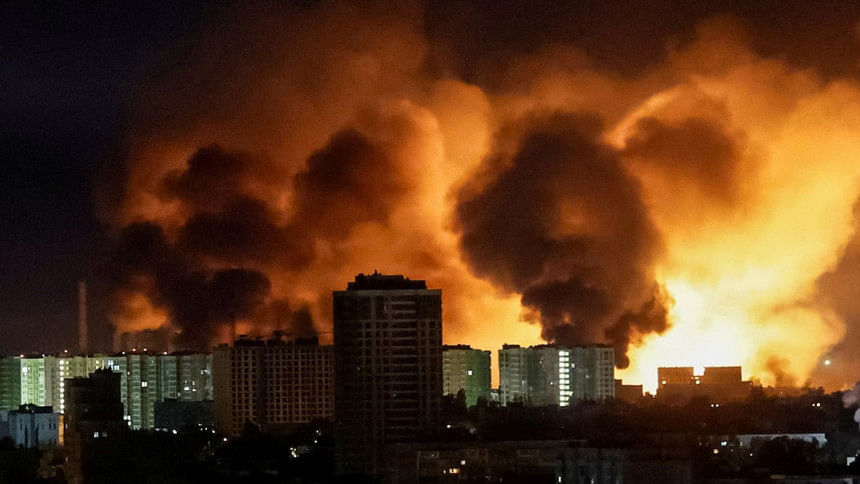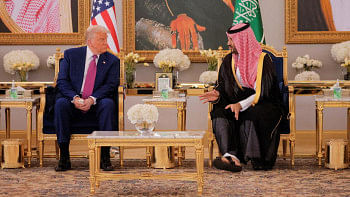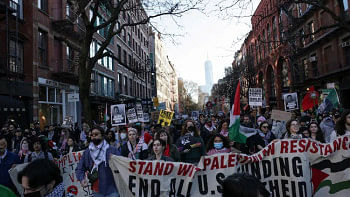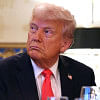Is Trump’s approach to the Russia-Ukraine war a geopolitical gamble or a strategic withdrawal?

When Donald Trump returned to the White House in January 2025, he vowed to end the Russia-Ukraine war, saying that he would end the war in Ukraine in 24 hours. This aptitude, repeated relentlessly during his campaign, hinged on his self-proclaimed prodigy for dealmaking and personal rapport with Vladimir Putin. Yet over 100 days into his presidency, the war rages on, as well as Russian strikes on Ukrainian cities have intensified. Trump's strategy has devolved into a pattern of contradictions and disengagement. The US president's initial bravado has collided with the grim realities of a war now in its fourth year, with escalating drone warfare and a large number of casualties on both sides. Trump's policy reversals—abandoning sanctions threats to Russia by lowering them, downplaying the US leadership, prioritising rare-earth mineral deals with Ukraine—have left the Kremlin emboldened and strained transatlantic unity.
However, the roots of this shift lie in Trump's transactional worldview. His administration inherited a war that had settled into a brutal attritional grind under President Joe Biden, with Ukraine relying on Western arms to thwart Russian advances. However, where Biden's approach marked the war as a struggle for "democratic sovereignty," Trump has treated it as a nuisance—an obstacle to his vision of a grand bargain with Moscow. Since Trump's win, US direct involvement has decreased. Meanwhile, enforcement of sanctions has ground to a halt and ceasefire plans have only advanced demands favourable to Russia. Yet in May 2025 alone, Russia carried out its largest aerial bombardment in the war. In this respect, Trump's recent calling of Putin "absolutely crazy" has been notable, but how much impact it will pose on the US approach remains a critical question.
The surge of Russian attacks coincided with Trump's diplomatic inertia. His sole tangible intervention—a two-hour call with Putin in mid-May—yielded little beyond vague Russian commitments to draft a "memorandum" on peace. Ukrainian President Volodymyr Zelensky slammed Russia for the delay, while some other officials dismissed the "document" as a stalling tactic. Also, the US president's criticism of Putin contrasted sharply with his reproach of Zelensky, whom he accused of "causing problems," demanding that he "better stop."
The administration's failure to act decisively has had dire consequences. While Trump's Defense Intelligence Agency warned that Russia planned to fight through 2025, Trump at first kept pressuring Kyiv to make concessions without visible pressure on Russia to halt its attacks. Civilian casualties soared, with over 664 civilians killed and 3,425 injured, reported in the first four months of 2025, as reported by Kyiv Independent. All the while, the US president emboldened Russian President Vladimir Putin by declining to impose pressure for an immediate ceasefire—backed by Europe—of meaningful sanctions. After Trump's two-hour phone call with Putin, he told reporters on May 19 that the call was "meaningful and frank" while the Russian leader declined to support the 30-day ceasefire plan. Putin instead ordered a "security buffer zone" along Ukraine's Eastern borders, and strikes on Ukraine's civilian buildings escalated to the heaviest bombings on May 10, with 70 missiles and almost 300 drones. Russian air raids continued on May 25, and Trump remained silent until May 27, when he finally addressed the massive aerial attacks on Ukraine. Posting on TruthSocial, Trump referring to the Russian President, said, "Something has happened to him. He has gone absolutely CRAZY!" On the same day, sources interviewed by The Wall Street Journal said Trump is considering renewed sanctions, but he could also decide to not impose sanctions at all. One of Trumpʼs key considerations, according to US officials interview by The Wall Street Journal, was his belief that he knew Putin well and that the Russian leader would end the war as a favour.
Trump's dynamic of bluster and retreat has undermined US credibility. It left Kyiv to face intensified attacks and fractured Europe's trust. Critics argue that Trump's approach has been less about diplomacy than coercion, pressuring Ukraine to comply with the territorial concessions. It became explicit in May, when the US declined to join the European-led sanctions, instead suggesting that Kyiv and Moscow resolve the conflict "independently." For Ukraine, already strained by dwindling Western aid, the lack of US leadership has been critical.
Biden's stalemate vs Trump's concessions
The differing approaches of the Biden and Trump administrations divulge a dichotomy. Biden considered the war as "a defense of democratic values," rallying NATO allies to supply tanks, artillery, and air defence systems. His strategy reached a fragile stalemate, suggesting the preservation of Ukraine's territory while avoiding direct confrontation between NATO and Russia. On the other hand, Trump has been considering the war through a transactional viewpoint. His early moves—halting arms shipments to pressure Kyiv into ceasefire talks—allowed Russian forces to regain momentum in eastern Ukraine. Diplomatically, Trump sidelined European partners, insisting Ukraine and Russia negotiate bilaterally. This approach became more apparent when Vice President JD Vance said that the war is "not our conflict." It drew sharp rebukes in Kyiv. Consequently, the contrast extends to their handling of alliances. Biden's administration worked closely with Europe to coordinate sanctions and aid. By contrast, Trump's "America First" policy gave rise to cynicism. Therefore, European leaders question whether NATO can function without US commitment, particularly after Trump hinted at withdrawing troops from Europe's eastern border.
Trump's policy has been marked by a reluctance to leverage sanctions against Russia, a departure from the Biden-era consensus. Biden used to believe that economic pressure could curb Moscow's aggression. Where the European Union (EU) imposed 17 rounds of sanctions targeting Russian energy, finance, and technology sectors, Trump deemed such measures as obstacles to maximising opportunities for Americans. This shift was clear during Trump's call with Putin this May, where discussions focused less on ending the war than on post-conflict economic collaboration. The Kremlin later emphasised Trump's enthusiasm for Russian rare-earth minerals and energy exports—sectors critical to US tech and manufacturing. In the meantime, the lack of US enforcement diluted EU efforts to isolate Moscow. One EU diplomat remarked, "We cannot deter Putin if America prioritises trade over security."
Putin's chess game is complex. On May 27, Turkish Foreign Minister Hakan Fidan went on a two-day visit to Moscow, and Russian stressed on bilateral relations rather than Ukraine. Russian sources have said they viewed Turkey, the United Arab Emirates, Saudi Arabia, Qatar and Oman as potentially suitable venues for direct talks with Ukraine in a direct blow to Trump who posed himself as the chief negotiator to end the war. The Kremlin's state media in February, framed Trump's deference as a victory. For Putin, Trump's isolationism validates a long-standing assumption: that Western resolve would fracture under economic and political pressure.
A strategic dilemma for Europe?
In March, the EU unveiled an 800-billion-euro defence plan with a view to bolstering arms production and making a joint rapid-response force. However, internal divisions persist. Poland and the Baltics advocate for unswerving military aid to Ukraine, while Hungary's Viktor Orbán—echoing Trump's rhetoric—calls for pragmatic engagement with Moscow. The EU's May 2025 sanctions package, targeting Russian LNG and shadow tankers, marks progress but highlights lacunae. Europe lacks the capacity to replace US intelligence sharing or advanced air defences. It leaves Ukraine vulnerable to missile strikes. At the same time, Trump's threats to withdraw US troops from NATO's eastern flank have given rise to concerns. If the US does not ensure its commitments, Europe cannot help but prepare to defend itself. For Ukraine, Europe's resolve is a lifeline, but doubts linger. Although the EU amplified aid, Kyiv's battlefield prospects depend on sustained Western unity—a unity questioned and puzzled by Trump's ambivalence.
Trump's approach to Ukraine raises questions regarding transatlantic ties (with NATO and the EU) as it has insofar left Kyiv fighting for survival with waning support. For Europe, the lesson should be clear. The EU's push for strategic autonomy faces immense hurdles—from internal divisions to military inadequacies. For the US, the cost of winning a trade deal with Russia may be the loss of its role as the self-proclaimed anchor of global stability. The war in Ukraine has become a referendum on something far larger: whether a world order built on rules and alliances can withstand the rise of transactional nationalism. In the era of a geopolitical and geoeconomic crux, ambiguity is the only certainty.
Kawsar Uddin Mahmud is a geopolitical analyst and researcher based in Dhaka. He can be reached at [email protected].
Views expressed in this article are the author's own.
Follow The Daily Star Opinion on Facebook for the latest opinions, commentaries and analyses by experts and professionals. To contribute your article or letter to The Daily Star Opinion, see our guidelines for submission.

 For all latest news, follow The Daily Star's Google News channel.
For all latest news, follow The Daily Star's Google News channel. 










Comments